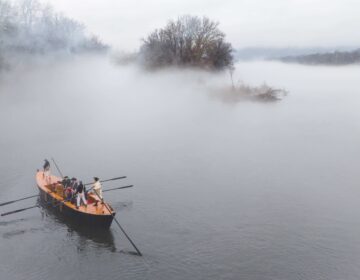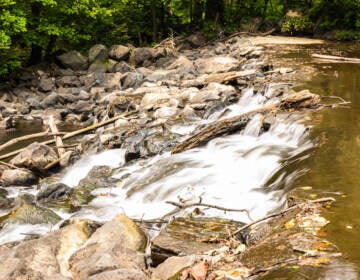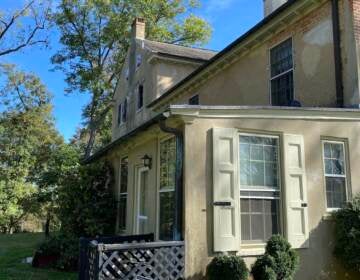Site of Delaware’s only Revolutionary War battle to be preserved
Delaware officials say it will further protect the state’s only Revolutionary War battlefield.
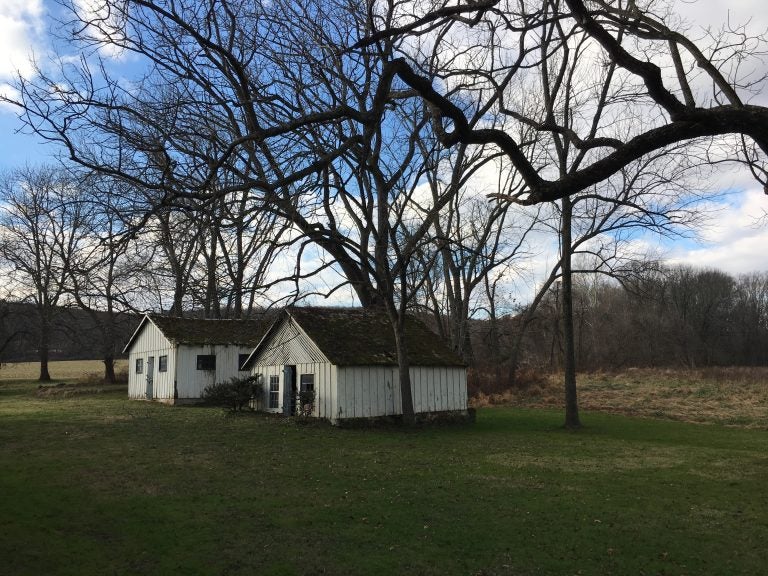
The Cooch family is selling their historic home and ten acres of land surrounding to preserve the site of Delaware's only Revolutionary War battle in 1777. (Mark Eichmann/WHYY)
As the British were marching towards Philadelphia in late summer 1777, General George Washington sent a unit of soldiers to delay the Redcoats advance by making a stand at Cooch’s Bridge. The bridge was a chokepoint along the route to Philadelphia, a narrow crossing over the Christina River near present-day Newark.
After hours of heavy fighting, the Continental Army was forced to retreat after losing some two dozen soldiers. Though defeated, the fierceness of the battle revealed how aggressive the American army would fight to stop the British advance on Philadelphia, which was the de facto capital of the new nation.
The site of that battle has been preserved as Cooch’s Bridge Historic District and is listed in the National Register of Historic Places, but the state announced plans Friday to further protect Delaware’s only Revolutionary War battlefield by purchasing the historic Cooch home and 10 acres of surrounding property.
“The entire property [has] an amazing amount of potential,” said Delaware Secretary of State Jeffrey Bullock. “I am extremely proud to announce today that … the heart of Cooch’s Bridge Battlefield is to be acquired by the state of Delaware on behalf of the people of our state.”

To purchase the site, the state will pay $875,000 from the Delaware Open Space Council funds. The Cooch family will also receive an additional $200,000 from the Crystal Trust and $25,000 from the Marmot Foundation — both private philanthropic organizations in Delaware. The Cooch family will donate 20 percent of the proceeds to the Cooch’s Bridge Historic District Fund to support maintenance and preservation at the site.
The decision to sell the property for state preservation brought mixed emotions for Richard Cooch. The property has been in his family for nine generations since it was first purchased in 1746. “We have every confidence … that the state’s new direct stewardship of the house and the 10 acres around it … is going to be the best and most responsible way forward for this property,” Cooch said.
Beyond the historical significance of the land, the property is hallowed ground. “The land is the final resting place of at least two dozen American soldiers,” said historical archaeologist Wade Catts. “These burials have never been found and are unmarked.”
As colonial soldiers retreated from the battle, the fallen were left behind to be buried by the British. It’s not clear where those bodies were buried, but after some work this summer by a team of archaeologists from Indiana University of Pennsylvania, a few possible sites have been identified and will be further investigated.
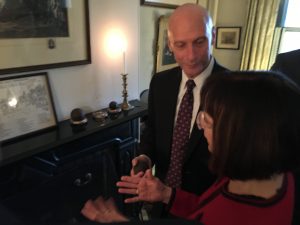
There’s also optimism that the ground under the battlefield may contain long hidden archaeological artifacts from nearly 250 years ago. A number of items from the battle have been uncovered on the property over the years, including a set of cannonballs which the Cooch family gifted to the state during the announcement ceremony Friday afternoon.
After the battle, British general Lord Charles Cornwallis took up residence at the Cooch home and used it as his headquarters for five days. He even stabled his horses inside one of the homes’ living rooms. In a sign that time may not heal all wounds, Dick Cooch’s father Ned Cooch proudly displayed artwork depicting Cornwallis’ surrender to Gen. Washington at Yorktown, signifying the end of the war. “He would always mention that when he would be speaking to a group such as this,” Cooch said.
WHYY is your source for fact-based, in-depth journalism and information. As a nonprofit organization, we rely on financial support from readers like you. Please give today.



